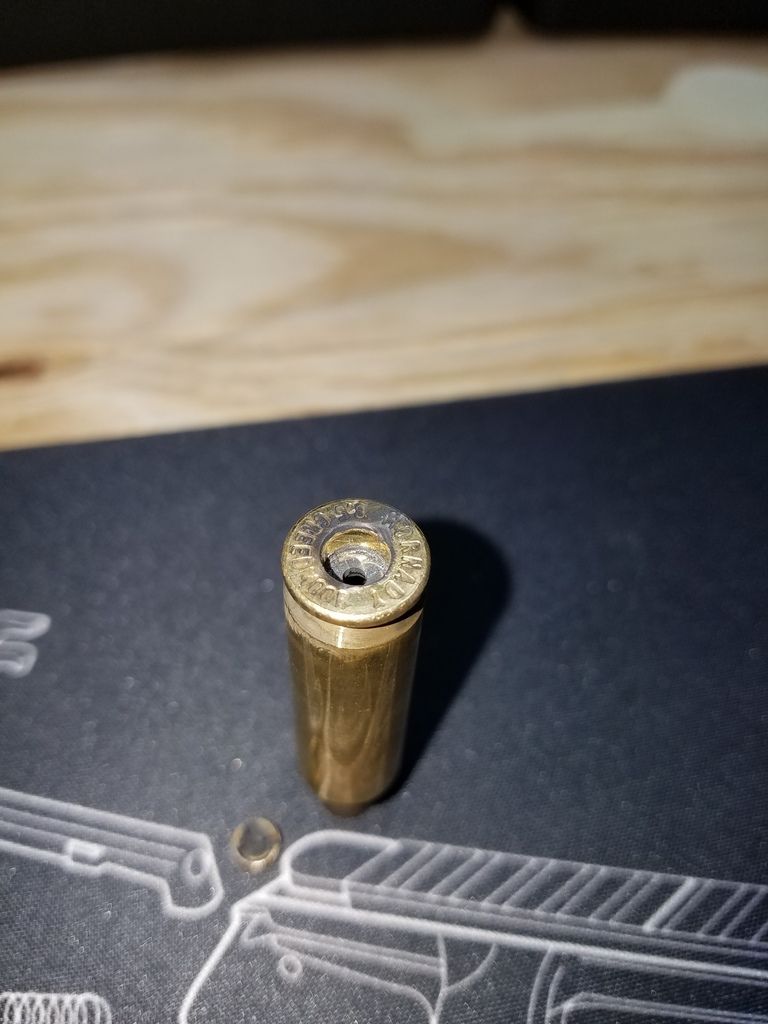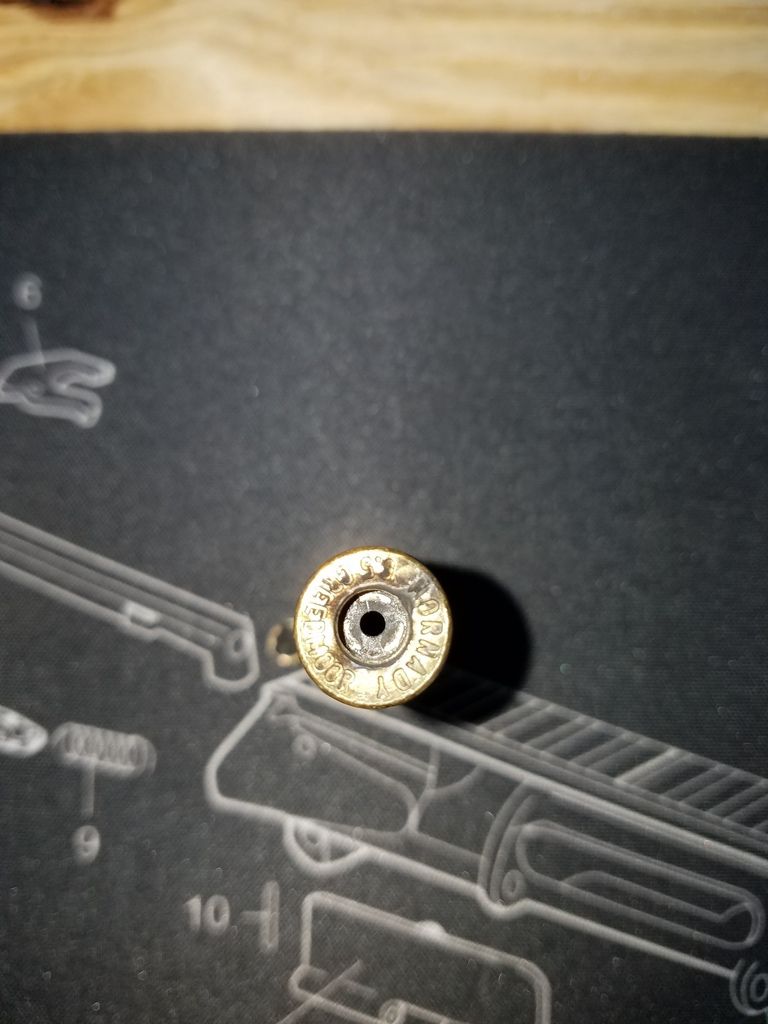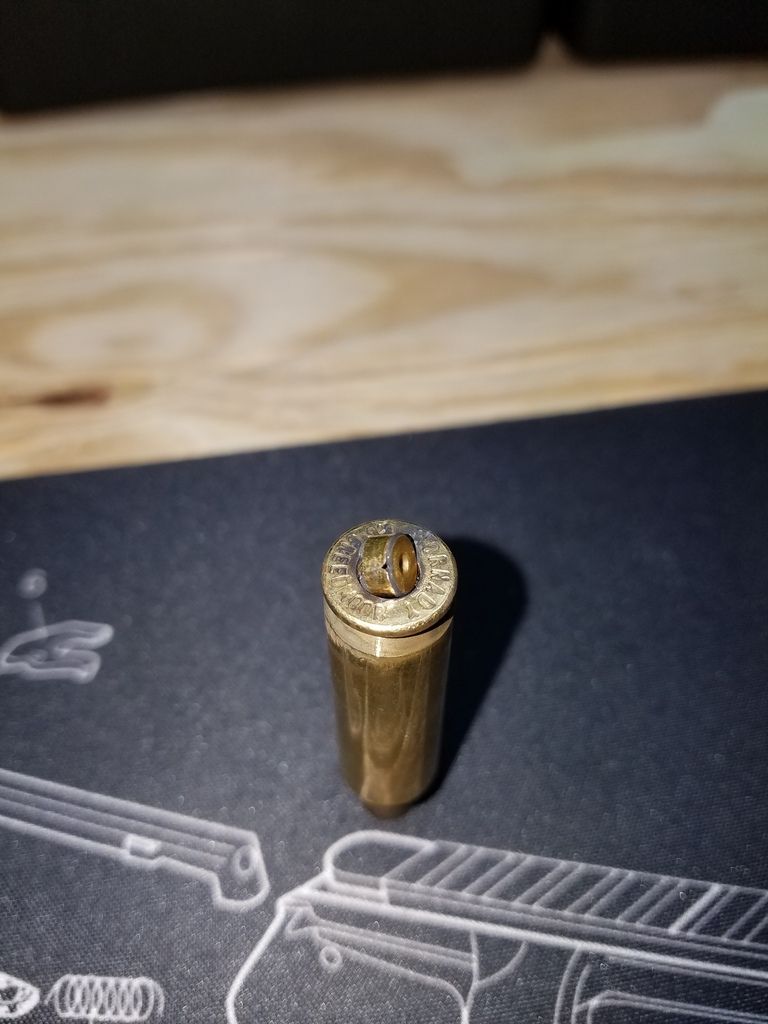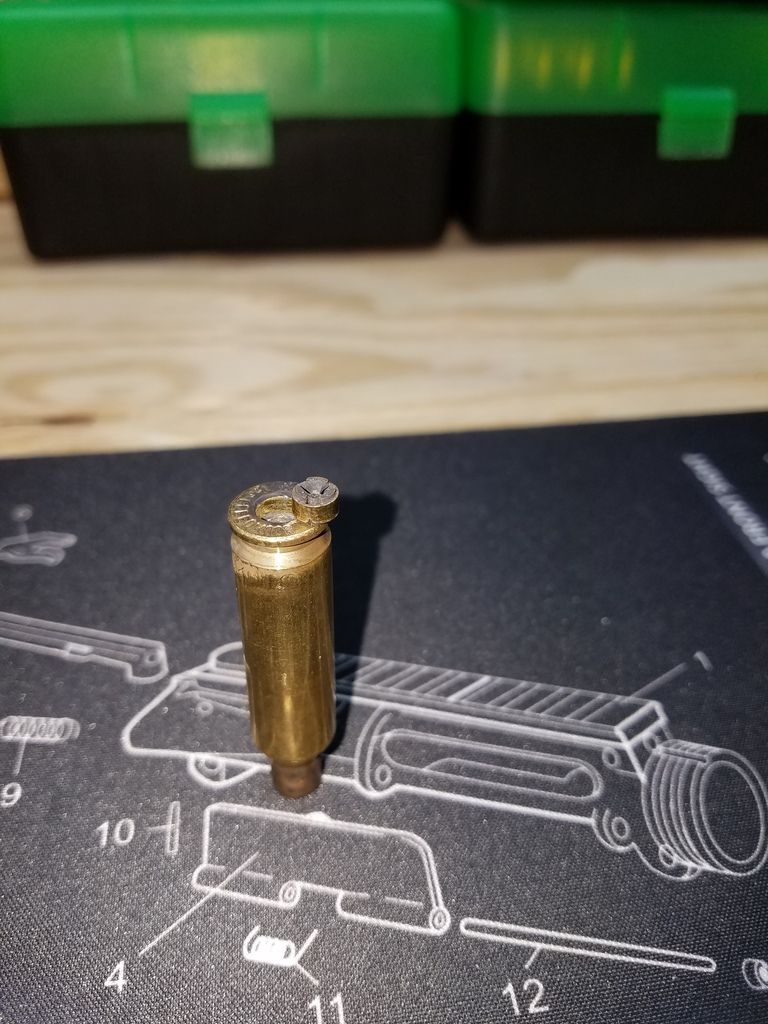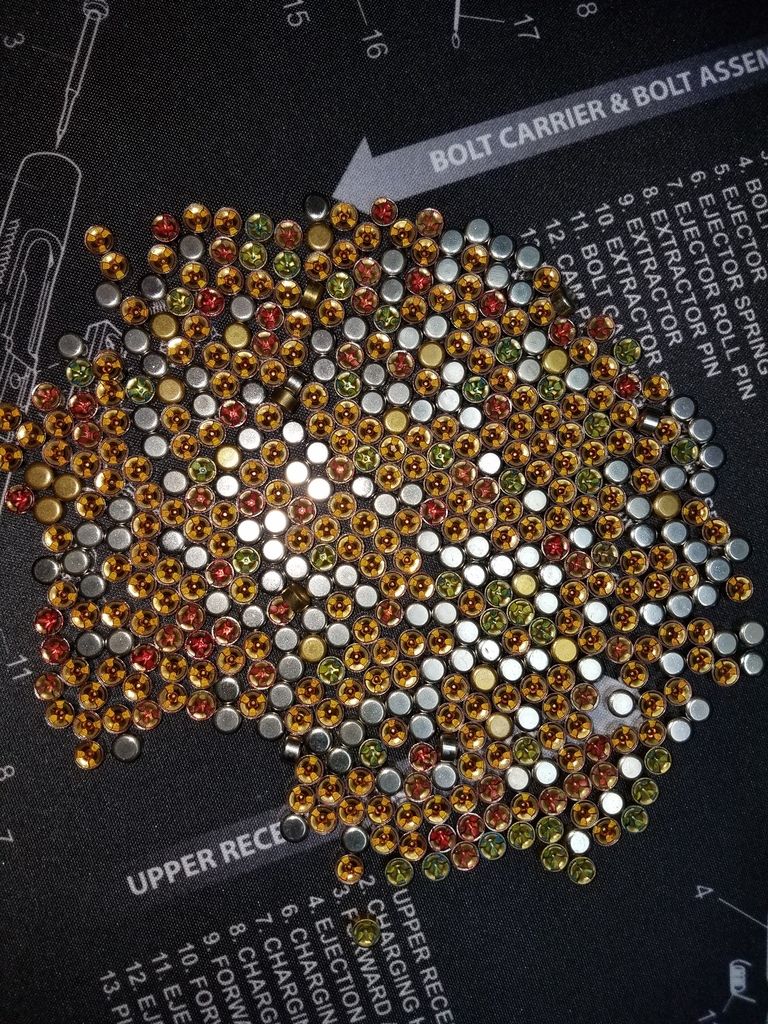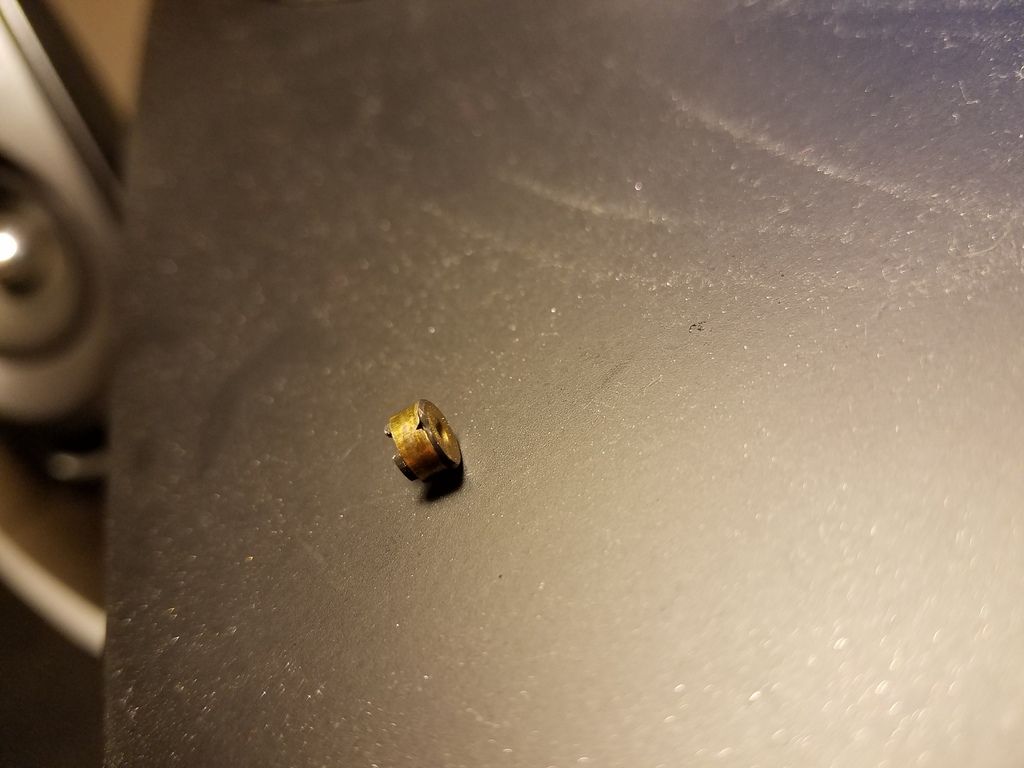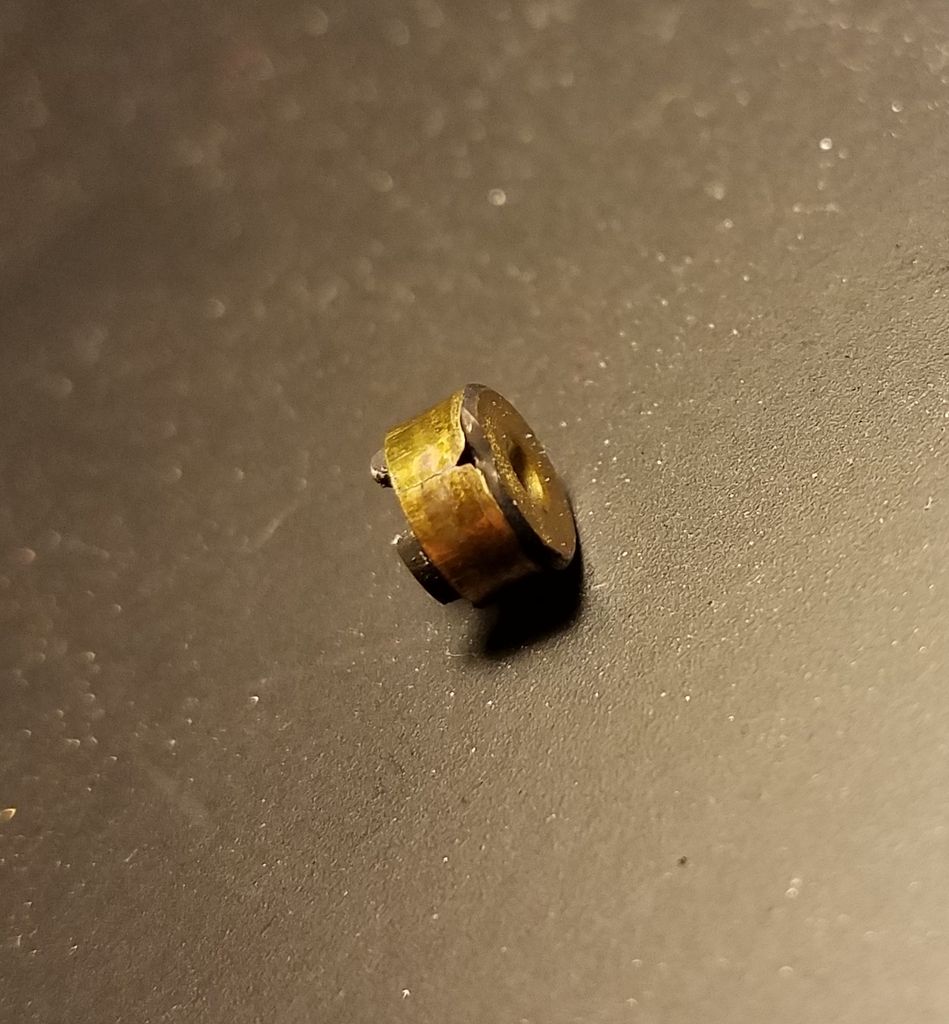Brass color looks like a Winchester primer, though some of the foreign ones don't nickel plate the cups either. There have been some complaints about some lots of Winchester primers piercing and leaking like that. The flattening is pretty noticeable, but not unusual by itself. I would switch to something harder like a CCI and see if the flattening is reduced any.
I'll mention also that I've seen primers in loaded rounds go from rounded to flat with the same partial case fill charge, depending whether the powder is forward over the bullet and away from the flash hole, or backward over the flash hole. Tilting the loaded gun forward or upward before coming level to fire will create these two conditions. If you develop a near maximum load always tilting powder forward, then tilt it up for one round during shooting, that could happen.
I've seen many a Garand bolt with rings of those pierced primer marks around the flash holes. It doesn't affect function, but it is annoying, especially on a new rifle.
I'll mention also that I've seen primers in loaded rounds go from rounded to flat with the same partial case fill charge, depending whether the powder is forward over the bullet and away from the flash hole, or backward over the flash hole. Tilting the loaded gun forward or upward before coming level to fire will create these two conditions. If you develop a near maximum load always tilting powder forward, then tilt it up for one round during shooting, that could happen.
I've seen many a Garand bolt with rings of those pierced primer marks around the flash holes. It doesn't affect function, but it is annoying, especially on a new rifle.

